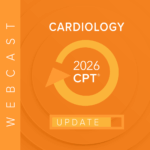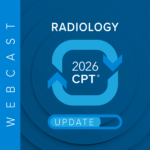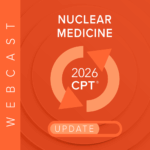Upper extremity coding is a sea of complexity that can easily sink coding accuracy if you are not prepared. Thrombolysis, in particular, poses a high risk for costly mistakes if not coded with precision. Our experts have targeted catheter-directed thrombolysis as a top priority for review. This essential procedure, which involves infusing a lytic agent directly into an artery or vein to break up clots, can span multiple days and take various forms—before, after, or independent of other interventions. To address this complexity, the AMA has assigned specific codes based on timing and duration. This month, we are exploring coding examples that break down common scenarios, complete with coding assignments and rationale for advancing comprehension.
Exploring Expert Examples in Action
The following two examples demonstrate the use of these codes.
EXAMPLE 1
Day 1
1:00 p.m. Left common femoral artery is catheterized from a right groin access, and a diagnostic left lower extremity angiogram is performed. Based on the findings, the decision was made to begin thrombolysis in the popliteal artery. The catheter was maneuvered to the left popliteal and thrombolysis was initiated.
5:00 p.m. The patient is brought back for a follow-up angiogram, and thrombolysis is resumed.
Day 2
8:00 a.m. The patient is brought back for a follow-up angiogram. The decision was made to perform mechanical thrombectomy in the popliteal. The thrombolysis catheter was removed, suction thrombectomy performed, and a new thrombolysis catheter was placed. Thrombolysis was resumed.
4:00 p.m. The patient is brought back for a follow-up angiogram. Thrombolysis was stopped, catheter was removed, and a closure device was deployed.
Codes assigned:
Day 1: 36247, 75710-59, 37211
Day 2: 37214, 37186
EXAMPLE 2
Day 1
1:00 p.m. The left common femoral artery was catheterized from a right groin access, diagnostic left lower extremity angiogram was performed. Based on the findings, decision was made to begin thrombolysis in the popliteal artery. The catheter was maneuvered to the left popliteal, and thrombolysis was initiated. 5:00 p.m. The patient is brought back for a follow-up angiogram and thrombolysis resumed.
Day 2
8:00 a.m. The patient is brought back for a follow-up angiogram. The decision was made to perform mechanical thrombectomy in the popliteal. Thrombolysis catheter was removed, suction thrombectomy performed, and a new thrombolysis catheter was placed. Thrombolysis was resumed.
4:00 p.m. The patient is brought back for a follow-up angiogram. Thrombolysis was resumed.
Day 3
8:00 a.m. The patient is brought back for follow-up angiogram. Thrombolysis was resumed. 12 Noon The patient is brought back for follow-up angiogram. Catheter is repositioned. Thrombolysis was resumed.
4:00 p.m. The patient is brought back for follow-up angiogram. Thrombolysis was discontinued, catheter was removed, and closure device was deployed.
Codes assigned:
Day 1: 36247, 75710-59, 37211
Day 2: 37213, 37186
Day 3: 37214
As noted above, the thrombolysis codes are unilateral (or separate vascular bed). There could be situations where separate thrombolysis procedures are begun in separate extremities or vascular beds and one is discontinued before the other. Each procedure should be coded separately. One example (see example 1 below) would be if arterial thrombolysis is begun on Monday in both legs, discontinued on Tuesday in the left leg, but continued until Wednesday in the right leg. Another example (see example 2 below) would be venous thrombolysis begun on Monday in the right leg, discontinued on Tuesday in the right leg, but begun in the left leg, with discontinuance on Wednesday.
According to the AMA, each of these would be coded in the following way.
Codes assigned:
Example 1:
Monday: 37211-50
Tuesday: 37214-LT, 37213-RT
Wednesday: 37214-RT
Example 2:
Monday: 37212-RT
Tuesday: 37214-RT, 37212-LT
Wednesday: 37214-LT
NOTE: CMS has NCCI edits that preclude billing 37211 or 37212 with 37213 or 37214 and edits
precluding billing 37213 and 37214 together. Bilateral services with modifier 50 are allowed and will be paid at 150 percent of the Medicare physician fee schedule (assuming medical necessity requirements are met).
All four of these codes have an MUE of 1 per day with an MUE adjudication indicator (MAI) of 2.
This means that Medicare will not pay for the same code twice on the same day unless billed on one line with modifier 50. If billed with modifier 59 or with modifiers RT and LT, all line items with those codes will be denied. A Medicare contractor may not over-ride the MUE unless it is following a post-appeal directive issued by a qualified independent contractor (QIC) or ALJ.
⚠️ Your 2025 IR Coding Remains Under Threat, Creating Significant Risk to Your Bottom Line. These Are NOT All the Tips and Tricks Necessary for Success.
With every dollar of reimbursement counting more than ever in the face of payment decline and complex changes, it’s imperative to make sure your CPT® coding is correct and compliant. Master more coding topics and break down the complexity with our 2025 Upper Extremity Interventional Radiology Coding live on August 6, 2025 at 11:00 am CT (120 minutes) or on demand past this date. This webcast is an essential training tool for both audio and visual learners.













